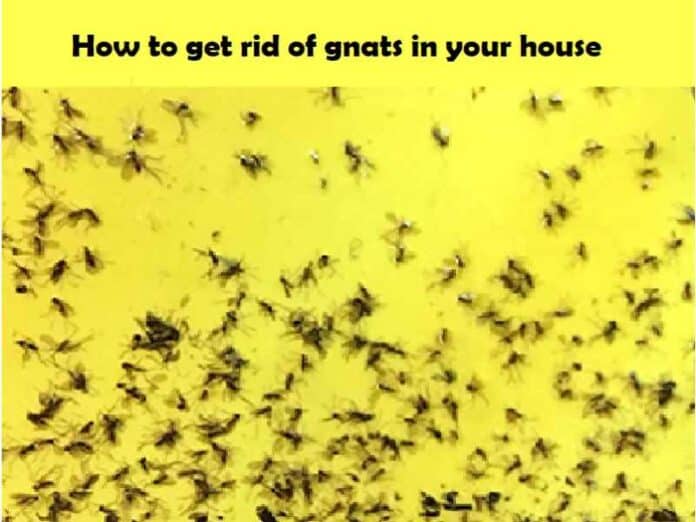
Gnats are a pesky little bugger, and they can be really bad when they start to swarm around your home. If you’re having trouble getting rid of them, then read on for some tips on how to get rid of gnats in your house.
What are Gnats?
Gnats are small, pesky flies in your home. They live in moist areas like kitchens and bathrooms. They thrive in warm, wet environments. Gnats tend to fly around at night, although they also fly during the day.
How Gnats Enter and Survive in Your House
Gnats enter through openings such as cracks in the walls or windows, and can hide in places like corners or behind furniture. Gnats also thrive in moist environments, so they may be more common near the wet areas of your home, like bathrooms and kitchens.
How Do Gnat Infestations Start?
Gnat infestations can start with any type of organic material, like food, animal droppings, or leaves. They love dark and damp areas, so they are often found in places like attics and basements. Gnats can also enter into homes through the air, on plants or flowers, or on people. Whenever possible, try to eliminate the source of the gnats before trying to control them.
How can I get rid of Gnats in My House?
Gnats are small, wingless insects that live in moist areas. They produce an irritating noise when flying and can accumulate on surfaces. To get rid of gnats, make sure your home is clean and free of debris. Seal any cracks in walls and floors with caulk or silicone sealant, which will prevent the bugs from entering your home in the first place.
Here are few tips on how to get rid of gnats in your house:
- Use a vacuum cleaner: Try using a vacuum cleaner with a high-power brush attachment to remove the gnats from hard-to-reach places. Vacuum the area regularly to remove any gnat eggs or larvae that may have been left behind.
- Get rid of dampness: Remove any excess water from around the house by using a fan, dehumidifier, or drying spells.
- Try using an insecticide spray: One popular way to get rid of gnats is to use a DEET-based insecticide or Diatomaceous Earth dabbed on a cloth or put into a spray bottle. Spray on surfaces where they congregate, such as windowsills, countertops, and around water spigots. Be sure to read the instructions carefully before using these products, as they can also be harmful if not used correctly. This will be most effective if you use it when they are clustered together.
- Use natural remedies: Some people prefer to use natural remedies like essential oils or garlic spray to get rid of gnats naturally. Be sure to test these remedies on a small area first before using them on an entire room or house!
- Use of Traps: Place traps near areas where the gnats are known to congregate and release the traps when there are large numbers of gnats present. Gnat traps work best if baited with sugar or honey and should be replaced every two weeks or so.
- Hire an exterminator:Sometimes, Gnats are incredibly hard to get rid of. If you have a gnat problem, it’s time to call in the exterminator.The best companies have expertise in treating gnat larvae, adults and even their eggs. They’ll take care of everything from creating your custom treatment plan straight through to preventative maintenance plans.
How to Prevent Gnat Infestations?
There are a few things that you can do to try and prevent gnat infestations in your home.One is to keep your house clean. Make sure that you are regularly cleaning all of the surfaces around your house, including the floors, walls, and ceilings. You can also try using natural deterrents such as citrus oil or garlic. Gnats tend to avoid areas where there is a strong smell or flavor.
Finally, make sure that you don’t leave any open containers of water near your home or garden. This attracts gnats and makes it easy for them to find a place to live.
Final Words
The key to getting gnats out of your lawn is to treat them early. The best measure is to prevent gnat infestation. Finally, keep your drains cleaned out so that liquid waste doesn’t accumulate and provide food sources that gnats don’t like (such as greasy residues).
